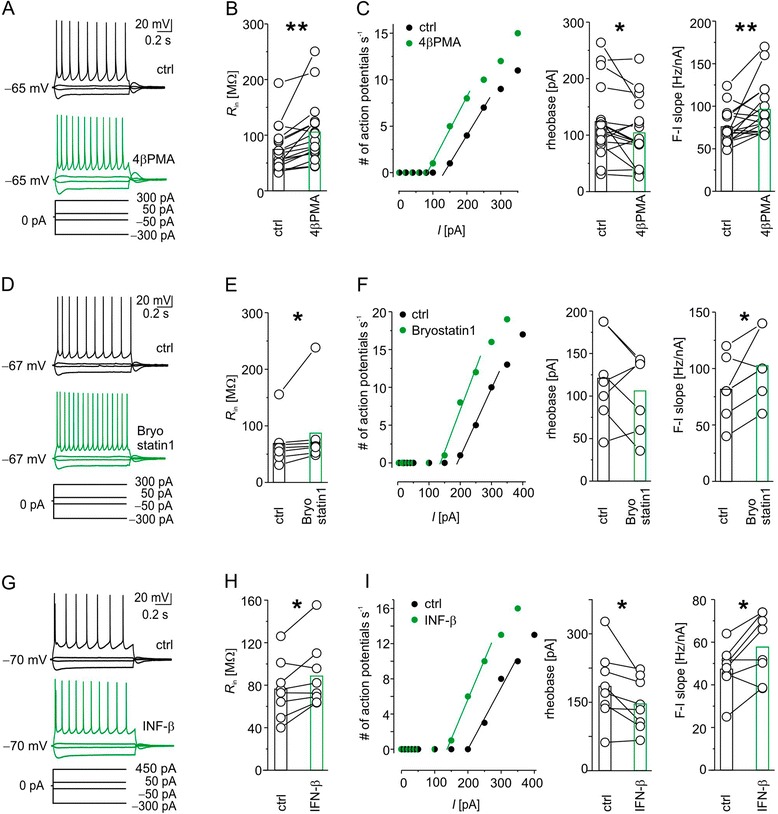Figure 2.

Ex vivo whole cell recordings in neocortical rat slices prove that pharmacological protein kinase C activation with 4β-phorbol 12-myristate 13-acetate or Bryostatin1 increased the suprathreshold excitability of layer 5 pyramidal neurons, thereby reproducing the effect of IFN-β. (A), (D) and (G) Example trace of layer 5 pyramidal neurons in current-clamp recorded before (top) and after application of (A) 1 μM 4β-phorbol 12-myristate 13-acetate (4β-PMA), (D) 1 μM Bryostatin1 or (G) 1,000 IU ml−1 IFN-β (middle). In all in vitro current-clamp experiments we injected 1-second long rectangular current pulses with an increment of 50 pA and an interval of 5 seconds. For the sake of clarity, merely the voltage responses to the current injections indicated at the bottom are depicted in this and the following figures. The initial input resistance and capacitance of the depicted neurons were (A) 43 MΩ and 250 pF, (D) 45 MΩ and 230 pF and (G) 50 MΩ and 167 pF, respectively. (B), (E) and (H) Population data demonstrate an increase of input resistance (Rin) under respective protein kinase C (PKC)-activating conditions. (C), (F) and (I) Action potential rate of a respective example neuron plotted as a function of the input current (left). Population data demonstrate a decreased rheobase for 4β-PMA and IFN-β or a tendency of decrease for Bryostatin1 (F) (middle) and an increase of the F-I slope (right) following application of PKC activators or IFN-β. Note that we restricted our fit to the first linear part of the F-I plot, because we regard this part as physiologically most relevant. *P < 0.05, **P < 0.01. ctrl, Control.
